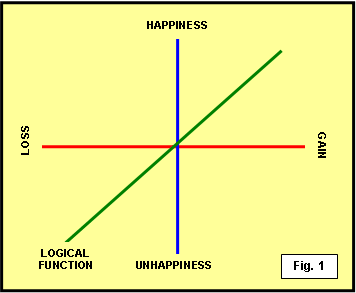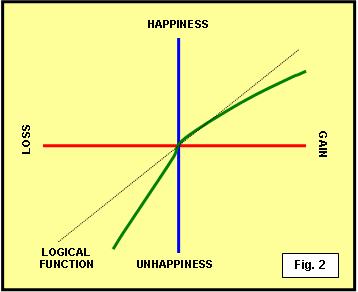| Framing your Negotiations |  |
| Research to consider when framing and reframing your negotiation language in a positive manner to increase the probability of your success - by Dr D Venter. |
It is mainly as a result of the research of Kahnerman and Tversky that framing language has enjoyed increasing attention over the past two decades. Framing has become a primary component in the negotiation equation, yet it is regrettably not very well understood by many negotiators.
The application of framing goes back to the time of Aristotle when he employed framing very effectively to depict murdering rogues as commendable patriots and thereby attained their acquittal.
DEFINITION
|
The O.J Simpson trial is one the best examples of framing that comes to mind. At the start and from the opening frame provided to the judge, O.J. innocent or O.J. guilty, the prosecution chose to re frame the trail as, O.J. the male wife-beater vs. the female victim. The defence chose the frame, O.J. the ethnic minority victim vs. the racist police force. The frame that the jury elected to use also determined the verdict that was presented.
Frequently, we employ framing to develop a rationale of why we should do something or acquire a particular product or service. Consider the example of an individual who goes into an audio-visual store and is trying to determine whether they should buy a surround sound system (frame: surround sound system vs. no surround sound system) and ends up purchasing a costly system as a result of one of the following forms of negotiation framing:
- Reframing the original decision, namely buy vs. not buy, to home entertainment vs. expensive cinema/ theatre outings. By skilful reframing the individual rationalises the purchase of an expensive surround sound system - "It will preclude the need to spend money in the future on expensive cinema and theatre tickets, and allow much more enjoyment when watching television shows, DVD's and video's, will keep the family at home, and will effectively prevent the expensive practice to eat out after cinema or theatre shows."
- Permitting the salesperson to develop a focus frame that justifies the purchase of an expensive surround sound system - "People who purchase these systems save the expense of the system within one year by enjoying a movie and theatre experience of the highest quality in their homes together with their families. These systems rejuvenated family life as we knew it in the good old days!"
- Falling victim to a contrast frame when the salesperson cunningly shifts the focus of the decision away from the amount the person can afford to spend on an expensive surround sound system, by prompting the prospective client to support the importance of restoring traditional family values, and then reframing the purchase in the following manner- "Although this investment may appear on the surface to seem rather large, this is definitely not the case. Our instalment plan will only oblige you to spend the monthly equivalent of one case of beer. Surely your family is more important than the cost of one case of beer?"
From their studies on language framing, Kahnerman and Tversky created a theory on the reason why people make conservative or risky decisions. The premise of this theory, which they labeled prospect theory, people were more induced in how they reached a decision when faced with a loss than by the prospect of a similar gain. Following research clearly revealed that people do not measure losses and gains rationally, but rather are inclined to choose options with the highest subjective value, despite whether these options deliver the highest objective gain.
If there a perfect correlation between the actual gain and the psychological experience of a person picking up a $100 note, then this individual should be five times as happy as someone picking up a $20 note. The converse should also be true for a person who loses money. If this logical correlation were to be plotted on a vertical axis (happiness at the upper end and unhappiness at the lower end) and a horizontal axis (loss on the left and gain on the right) the following graph would appear:

If conclusions were always rational there ought to be a perfect match between the increase in good fortune and the increase in happiness (see Fig. 1). This does not appear to occur. Discovering a $1 coin is inclined to result in a degree of happiness that is not exactly duplicated when further $1coins are found. Even though each additional coin likely creates happiness, the limit of that happiness decreases for each additional coin found.
On the other hand, when a person loses a $1 coin the green line drops more rapidly than it climbed when a gain of $1 was experienced. This suggests that the joy of winning is less intense than the pain of loosing. Kahnerman and Tversky illustrate this graphically (see Fig. 2):

In the upper right "gain" quadrant the value rises slightly more rapidly in the lower happiness range, levelling off in the higher happiness ranges. This suggests that a small gain is quite adequate in making a person happy. In the lower left "loss" quadrant the line diminishes rapidly beneath where the logical 45% line should be and stays there. This reveals that losses are felt more strongly than would rationally would be expected. The loss line drops more poignantly than the gain line ever increases which reveals that people would rather not win than lose, as losing is inclined to hurt more than is actually the case.
PROSPECT THEORY: LOSSES ALWAYS LOOM LARGER THAN POTENTIAL GAINS
|
As losses seem larger than gains, people are inclined to adopt conservative strategies when faced with a positively framed problem, and adopt risky strategies when they are faced with a negatively framed problem. To illustrate this Khanerman and Tversky posed the following question to a representative sample of physicians:
"Imagine that the U.S. is preparing for an outbreak of an unusual Asian disease, which is expected to kill 600 people. Two alternative programs to cot the disease have been proposed. Assume that the exact scientific estimate of the consequences of the programs areas follows: If program A is adopted, 200 people will be saved. If program B is adopted, there is a one-third probability that no people will be saved and a two-thirds probability that that all people will be saved. Which of the two programs would you favour?"
As the problem was positively framed, 72% of the physicians chose program A, the safe and certain strategy, and only 28% chose program B, the risky strategy.
While asking the first group of physicians to reply to the positively framed problem, they also asked and equivalent group to reply to the same problem that had been negatively framed.
"Imagine that the U.S. is preparing for an outbreak of an unusual Asian disease, which is expected to kill 600 people. Two alternative programs to cot the disease have been proposed. Assume that the exact scientific estimate of the consequences of the programs areas follows: If program C is adopted, 400 people will die. If program D is adopted, there is a one-third probability that nobody will die and a two-thirds probability that 600 people will die. Which of the two programs would you favour?"

Although both questions were identical - 200 of 600 people saved being the same as 400 of 600 lost - physicians replied quite differently when faced with a negative language frame. Only 28% then voted for program C the conservative strategy and 72% for program D the risky strategy.
By altering the frame from positive to negative in negotiations, there was a near perfect reversal in the choices of professional persons in their field of expertise. Altering the frame from positive to negative powerfully affected the manner in how they perceived the problem - saving lives or not losing them.
The medical profession is frequently very puzzled by the irresponsible manner in how males over the age of 40 handle the threat posed by prostrate cancer. In spite of an abundance of freely available information they apparently prefer to die rather than conform with the necessity of regular medical examinations. Viewed from a rational viewpoint, males should have no difficulty in regularly submitting to a safe procedure which could guarantee their future health. Psychologically, however, this presents a risk, as the examination might uncover something they would prefer not to know, cancer. By not submitting themselves to regular medical examinations they ensure that nothing is uncovered that might cause them great distress.
In an investigation performed by Meyerowitz and Chaiken where they distributed two sets of brochures with identical content to comparable groups of patients in comparable clinics - one set emphasized the benefits related to breast self-examination (BSE) and the other set emphasized the losses associated with not performing BSE - there was a substantial increase in positive BSE attitudes and behaviours amongst the group of patients who were given the negatively framed brochures; a change that was still in existence four months afterwards.
Humans have a positive bias where we by and large expect good things to occur. Negative information is more persuasive as it does not validate these positive expectations and as a result tends to shock us out of our comfort zones. Additionally, we also inclined tend to more intensely look at information which does not confirm our expectations and to assign more influence to such opposing information during our decision-making process. We might better explain this by asking ourselves whether we would bring our family to a physician who is known to be exceptionally competent, but recently made a mess of a tonsillectomy performed on our neighbour's child. The answer obviously will be no, given that negative information overpowers positive information. We would expect the doctor looking after our family to be fully competent and not commit errors.
Although frames can be utilised for positive purposes, they can no doubt also be employed for negative, manipulative reasons in negotiations. Negative, manipulative frames can be countered by:
- recording the decision with views between the issues, and then ask yourself whether those are the real issues and then reframing;
- asking what other frames could be applicable when an open-and-shut decision is proposed (Is this surely a simple decision, or is it made to appear this way by the current frame?);
- never permitting ourselves to forget that we are in charge of our frames, by regularly asking "What is important?" and then responding accordingly;
- asking what the agenda of a person is when that person stands to gain from our compliance, and then countering with an alternate frame; and
- always remembering that anything we see or hear on TV, radio, the web or in print has been framed.
References
Kelton Rhoads, 1997
Khanerman & Tversky, 1982
Kanouse & Hansen, 1972
Fiske, 1980; Smith & Petty, 1996
Back to Negotiation Articles
We welcome the republication of this page's contents in part or full - we just ask that you include a clean link back to this site, to our www.negotiationtraining.com.au/training/ page.
|
Reader Comments
Average Reader Rating:
share your comment |
|
|
No comments |






Reader Comments
Average Rating:
Total Comments: 0